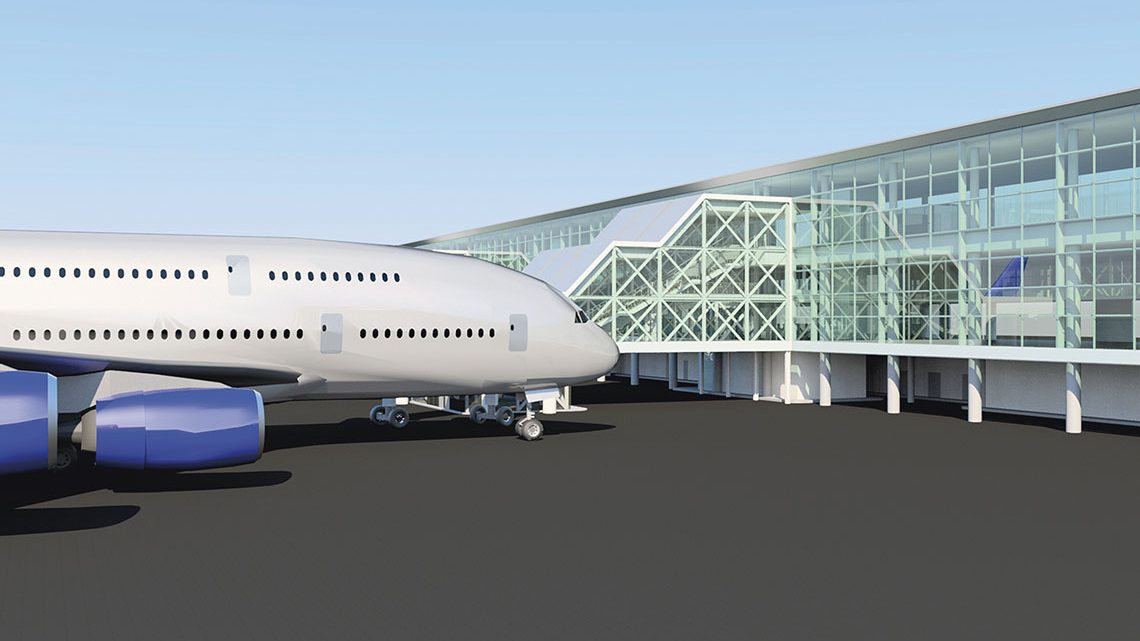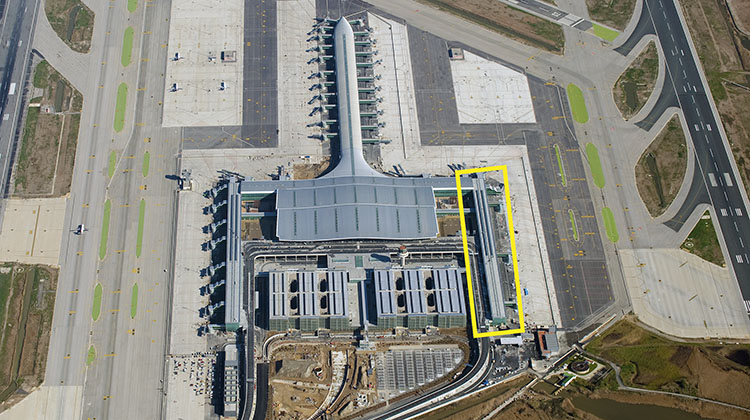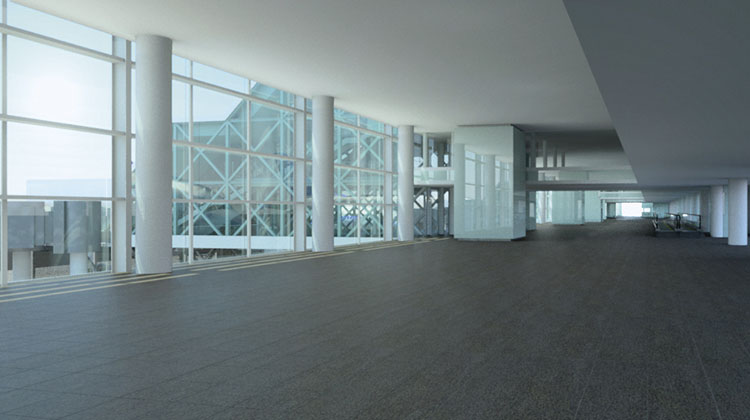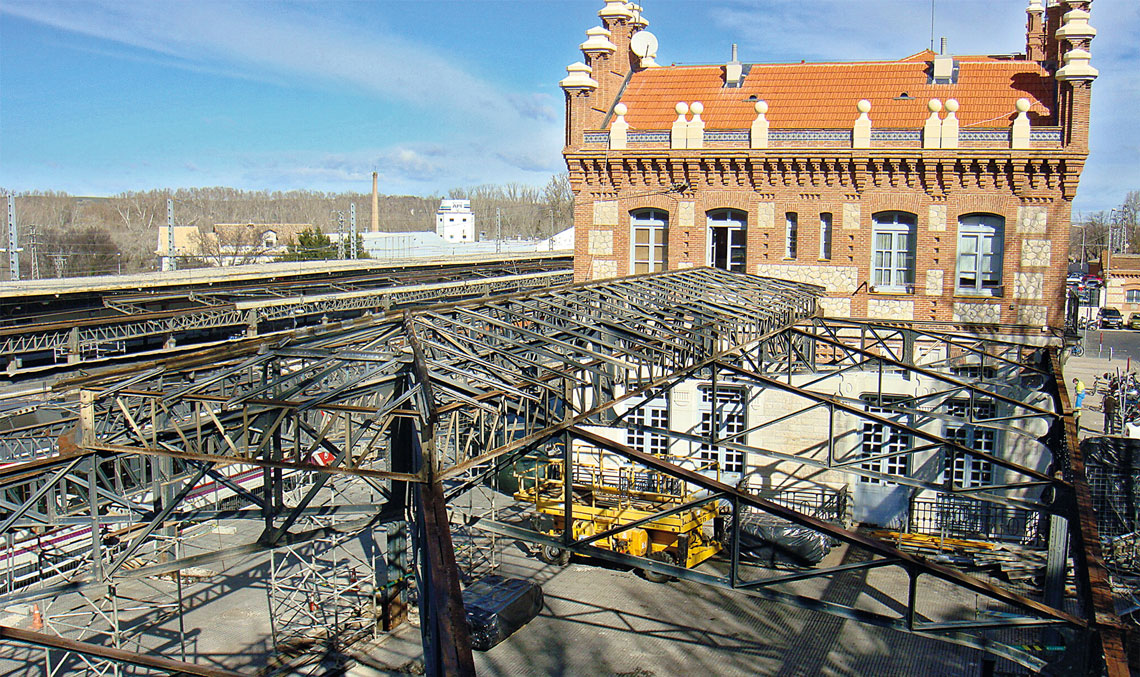The Barcelona-El Prat Airport has seen an increase in the number of wide-body aircraft operations in recent years. To manage this growth, Aena considered it necessary to increase the number of aircraft stands and boarding gates to accommodate aircraft that require a passenger boarding bridge and larger stands.
With the addition of two floors along the whole of the South Pier –approximately symmetrical to the North Pier– and the installation of several pre-boarding bridges, the airport will be able to serve more large aircraft on international routes.
Terminal T1 of Barcelona Airport has three boarding docks: the Longitudinal Pier, North Pier and South Pier. The Longitudinal Pier is generally used for Schengen flights, the North Pier for international flights (and also for the shuttle), and the South Pier for regional flights.
With the Addition of two floors and the installation of passenger boarding bridges, the South Pier of El Prat’s Terminal T1 will be able to serve greater numbers of large aircraft on international routes
Because of the different kinds of operations carried out in each one, the docks have different configurations: the Longitudinal Pier has a single level on floor P10, through which boarding and deplaning take place; the North Pier has three levels (P10 for domestic boarding and deplaning, P20 for international deplaning and P30 for international boarding); and the South Pier currently has a single level for boarding and deplaning.
Along both the North and South Piers, there are a number of aircraft stands that are used for operations with large-capacity aircraft (type-E and F). Due to an increase in the number of operations with these aircraft at Barcelona-El Prat Airport, the number of aircraft stands and boarding gates that can accommodate these types of aircraft needs to be increased, since they require two and sometimes even three passenger boarding bridges (at different levels) at the same time, and larger stands on the apron.
Aena will be undertaking two main infrastructure projects in the airport’s Terminal T1: the first one involves reconfiguring the apron of the South Pier to create 9 type-C positions, 3 type-E and 2 type-F. The second consists of redesigning the South Pier to adapt it to the new operations, namely, arrivals and departures of international flights and accommodation of large-capacity aircraft.
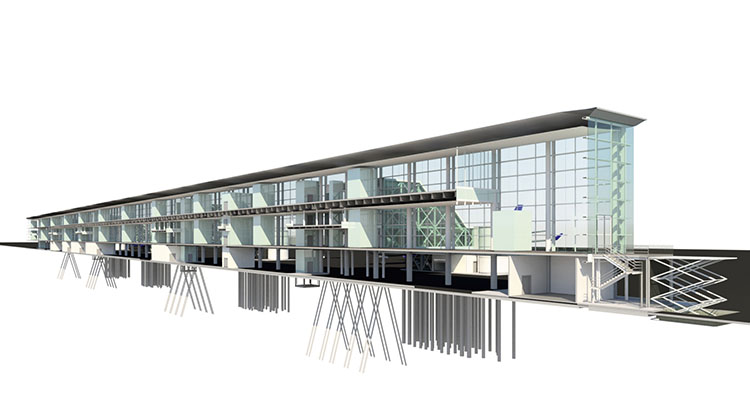
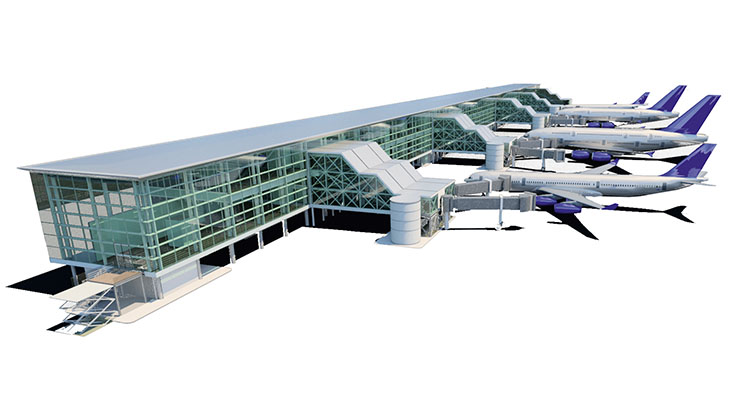
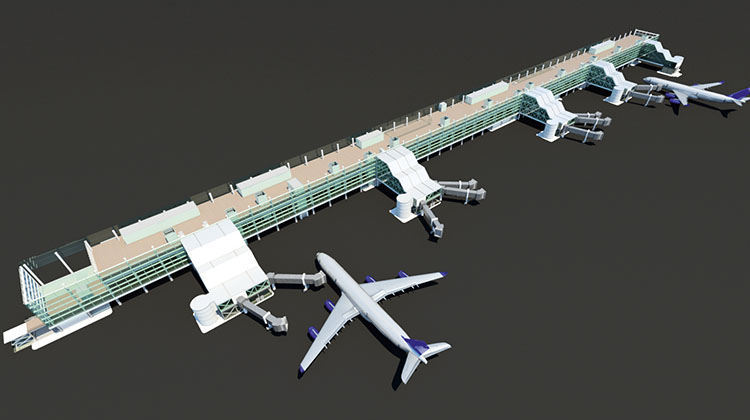
Redesign and enlargement
The South Pier redesign and enlargement project drafted by Ineco proposes an expansion of the constructed areas of the Terminal T1 building, with the completion of the P20 and P30 floors along the entire length of the dock (approximately symmetrical to the construction arrangement of the North Pier) and the construction of four new walkways with separation of departure/arrival flows.
Later, 10 new passenger boarding bridges will be added to the new walkways (two or three per walkway) to enable type-E and F aircraft to board and deplane with at least two boarding bridges simultaneously, in addition to a second boarding bridge attached to the existing walkway (P37) of the South Pier so that type-E aircraft can operate.
On 30 July 2018, Aena awarded the works to Sacyr Infraestructuras and Sacyr Construcción.
Ineco at El Prat Airport
Designed by the architect Ricardo Bofill, the T1 project, which concluded the major expansion of the airport that began in 1999, was the result of a competition in which eight international teams participated. The building, which was opened on 17 June 2009 and consists of a stylised sword-shaped structure that also evokes birds in flight as well as the outline of an aircraft, was designed to integrate into the environment, with the natural light of the Mediterranean playing a prominent role. For the new terminal area, Ineco provided comprehensive supervision services, supported the integration of architecture and engineering and coordinated the operational readiness and transfer of the new facilities. It also drafted the projects for a new apron control tower, common retail areas and a new underground Commuter line that runs under the airfield (see pp. 20-23).


